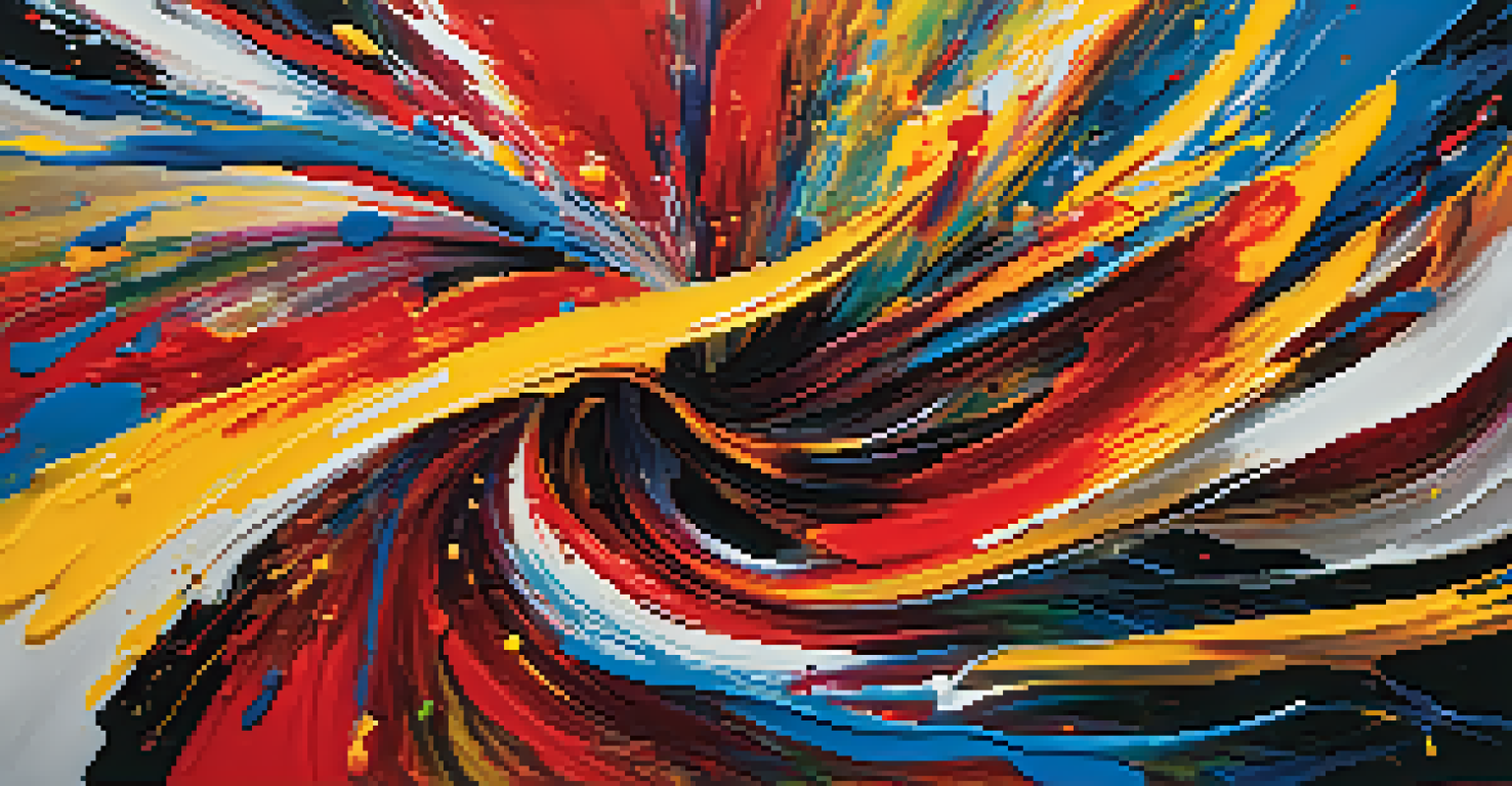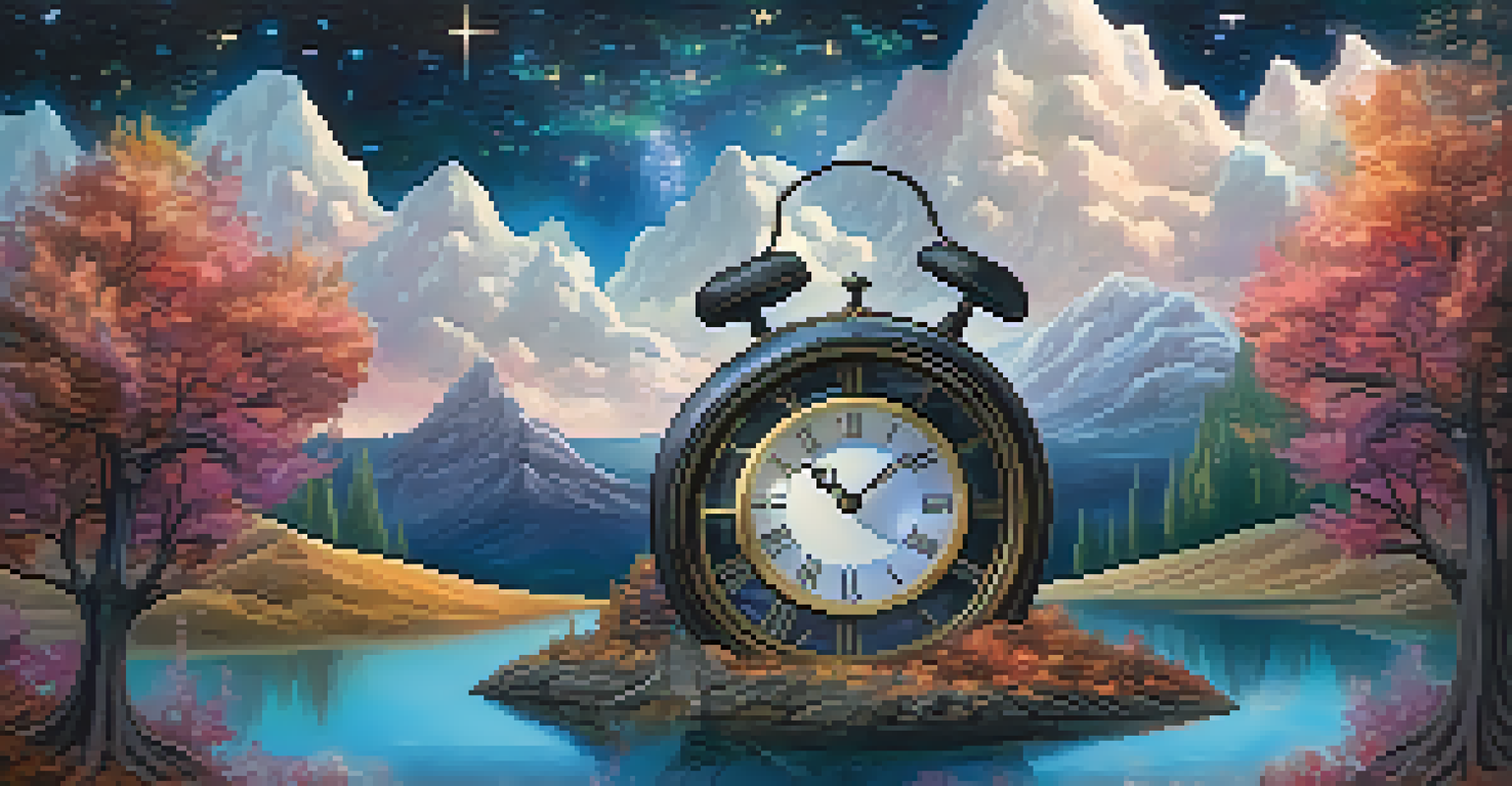Understanding the Influence of Art Movements on Modern Techniques

The Roots of Artistic Evolution: A Brief Overview
Art movements have always played a pivotal role in shaping the way artists express themselves. From the Renaissance to Abstract Expressionism, each era brought unique perspectives and techniques that influenced generations. Understanding these roots is essential for grasping how modern art has evolved.
Every artist dips his brush in his own soul, and paints his own nature into his pictures.
For instance, the Impressionists broke away from traditional methods, focusing on light and color rather than detail. This shift encouraged future artists to experiment with their own styles, paving the way for movements like Cubism and Surrealism. Each movement builds upon the last, creating a rich tapestry of artistic innovation.
Today, artists draw inspiration from these historical movements, integrating elements into their work. Whether it's the bold colors of Fauvism or the emotional depth of Expressionism, the echoes of the past continue to resonate in contemporary techniques.
Impressionism: The Catalyst for Modern Techniques
Impressionism is often regarded as a turning point in art history, marking a departure from traditional forms. Artists like Monet and Degas focused on capturing fleeting moments, which shifted the emphasis from realism to perception. This approach encouraged subsequent movements to explore new ways of seeing the world.

The techniques developed by Impressionists, such as quick brush strokes and an emphasis on light, opened the door for future experimentation. Modern artists often incorporate these techniques into their own work, creating pieces that evoke a sense of immediacy and emotion. For example, you might see similar brushwork in contemporary abstract paintings.
Art Movements Shape Modern Techniques
Historical art movements significantly influence contemporary artists by providing inspiration and techniques that are reinterpreted in today's works.
Moreover, Impressionism's focus on outdoor scenes and everyday life continues to inspire artists today. The movement's legacy can be seen in the way modern artists seek to capture the essence of their surroundings, often using innovative materials and methods that further expand their creative horizons.
Cubism: Deconstructing Reality in Art
Cubism, pioneered by artists like Picasso and Braque, introduced a radical way of representing subjects from multiple perspectives. By breaking objects into geometric shapes, they challenged traditional notions of perspective and composition. This deconstruction of reality has had lasting implications for modern art.
Art is the most beautiful of all lies.
Incorporating Cubist principles, contemporary artists often play with abstraction and form, inviting viewers to engage with their work in new ways. For instance, installations and mixed media pieces may reflect the fragmented nature of Cubist art, encouraging audiences to interpret meaning through their unique lenses.
Additionally, Cubism's influence extends beyond painting into fields like graphic design and architecture. The movement's emphasis on structure and abstraction can be seen in modern design, where simplicity and form often take precedence over ornate details.
Surrealism: Unlocking the Subconscious Mind
Surrealism emerged as a reaction to the chaos of the early 20th century, focusing on dreams and the unconscious. Artists like Salvador Dalí and René Magritte created thought-provoking imagery that challenged reality and logic. This exploration of the subconscious profoundly impacted contemporary artistic practices.
Modern artists often draw upon surrealist techniques, utilizing dreamlike imagery and unexpected juxtapositions to provoke thought and emotion. For example, you might find elements of surrealism in contemporary photography or digital art, where reality and fantasy blend seamlessly.
Impressionism Revolutionized Art
Impressionism marked a pivotal shift by emphasizing perception and light, encouraging artists to explore new ways of seeing the world.
Furthermore, surrealism's exploration of inner thoughts and feelings encourages artists to delve into personal experiences. This introspective approach can be seen in various modern art forms, fostering a deeper connection between the artist and the audience.
The Impact of Abstract Expressionism on Today's Art
Abstract Expressionism marked a significant shift in the art world, emphasizing emotion and spontaneity over representational forms. Artists like Jackson Pollock and Mark Rothko sought to convey feelings through their work, using bold colors and dynamic brushstrokes. This movement has left an indelible mark on contemporary art practices.
Today, many artists embrace the principles of Abstract Expressionism, focusing on the process of creation rather than the final product. This can lead to spontaneous, improvisational work that reflects the artist's emotional state, much like Pollock's famous drip paintings. The emphasis on process encourages a sense of freedom and experimentation.
Moreover, the movement's legacy is evident in various artistic disciplines, from performance art to installation. Modern creators often use their bodies or the environment as part of their artistic expression, continuing the tradition of exploring emotion through innovative techniques.
The Digital Age: A New Canvas for Artistic Expression
With the rise of technology, the art world has witnessed a dramatic transformation in how artists create and share their work. Digital tools have opened up new avenues for experimentation, allowing for a blend of traditional techniques with modern technology. This evolution reflects the influence of past art movements while paving the way for future innovations.
For instance, digital art often incorporates elements from Impressionism and Surrealism, using software to mimic brush strokes or create dreamlike landscapes. Artists can manipulate images and experiment with color in ways that were previously unimaginable. This fusion of the old and the new encourages a fresh approach to creativity.
Digital Age Transforms Artistic Creation
The rise of digital tools has revolutionized how artists create and share their work, blending traditional methods with modern technology.
Moreover, the accessibility of digital platforms has democratized art, enabling artists to reach global audiences. Social media and online galleries allow creators to showcase their work in real-time, fostering a vibrant community that thrives on collaboration and inspiration.
Conclusion: The Continual Dialogue Between Past and Present
Art movements have undeniably shaped the techniques and practices of modern artists. By understanding the historical context of these movements, we gain insight into the creative processes that inform contemporary art. Each era builds upon the last, creating a rich dialogue that continues to evolve.
As artists draw inspiration from their predecessors, they reinterpret and innovate, creating a unique blend of styles and techniques. This continual dialogue between past and present encourages a dynamic art scene that reflects the complexities of the human experience.

Ultimately, the influence of art movements on modern techniques serves as a reminder of the enduring power of creativity. By embracing the lessons of history, today's artists can explore new frontiers, ensuring that the conversation around art remains vibrant and relevant.